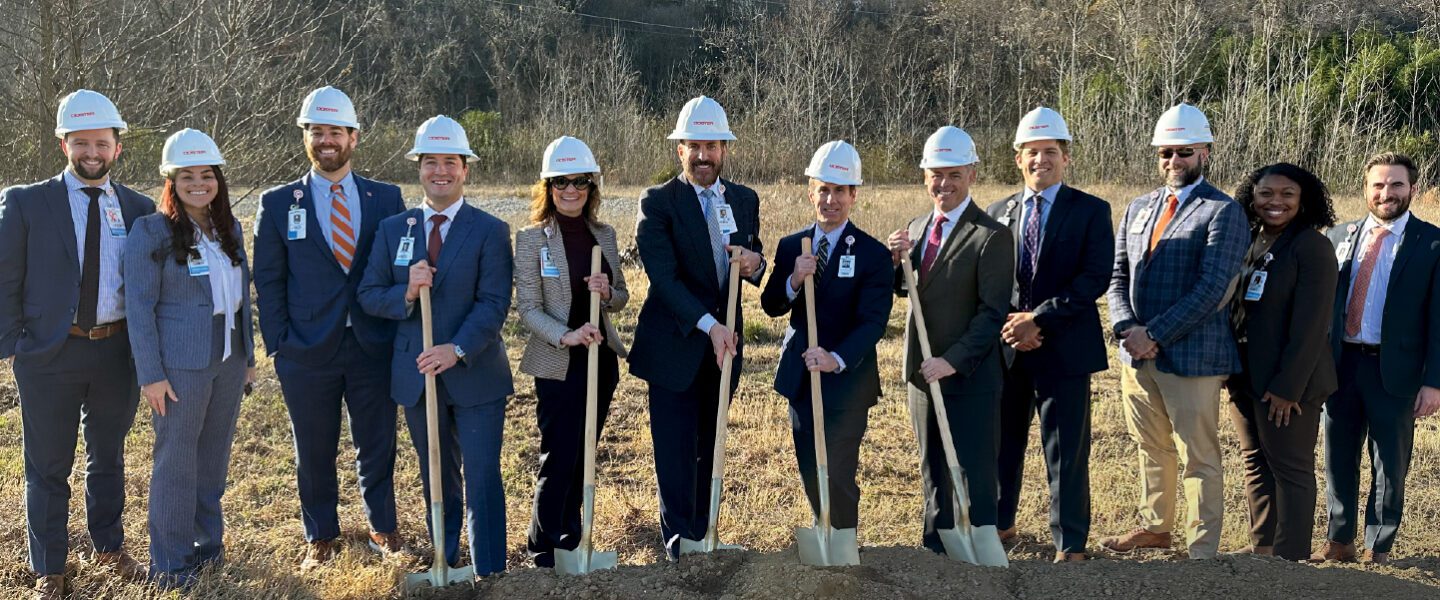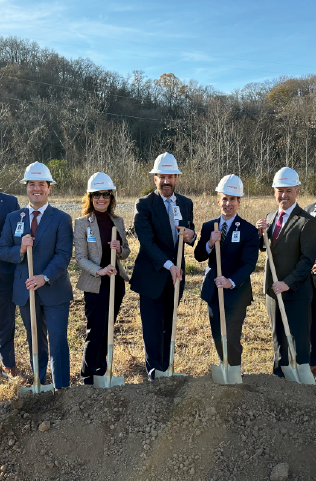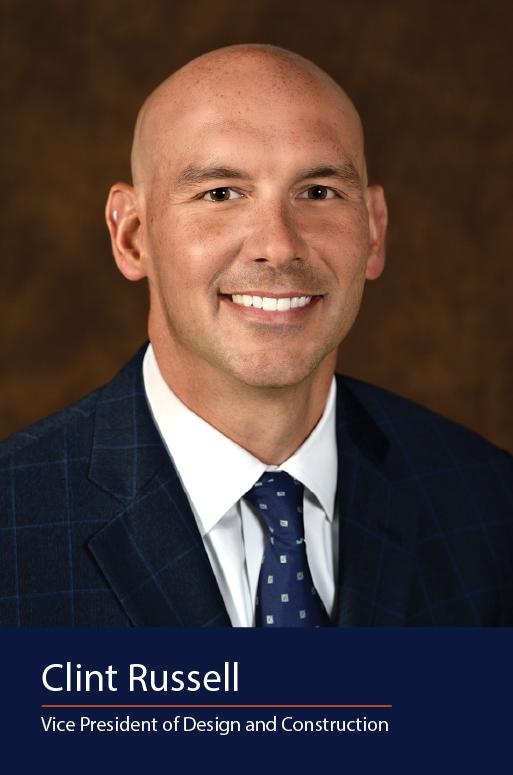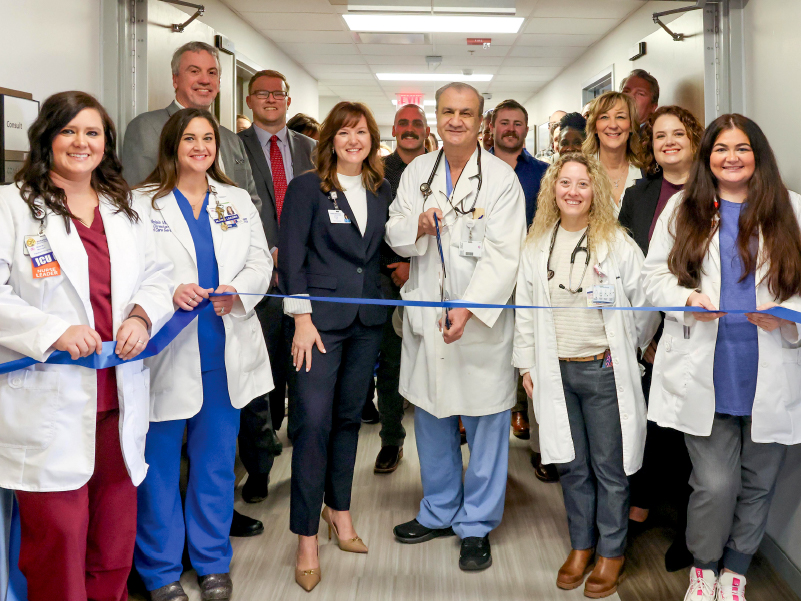When it comes to creating environments that make a positive impact on patient care, strategic capital improvements are key.


The current healthcare landscape is nuanced. While many health systems feel the acute strain of labor challenges and patient demand — going so far as to close some of their doors — HCA Healthcare’s financial stability and scale of resources mean we are able to not only maintain the care our communities rely on, but we are also in constant pursuit of improvement.
Those improvements require dedicated capital investment. Over the years, HCA Healthcare has supplied that crucial funding — roughly $5 billion — and those projects have been selected with great care.
When most people think of hospitals, they likely envision operating rooms or emergency departments; rooms filled with advanced medical tools; and doctors, nurses and technicians. But as Brent Clark, HCA Healthcare’s vice president of Capital Planning and Analytics, points out, we can never lose sight of the importance of everyday items.
“You can have all the brightest, shiniest new equipment, but if we don’t keep our infrastructure in place, all of that really doesn’t matter,” says Brent. “We have to be careful, because if you go in to turn on the lights in the operating room and they don’t turn on, guess what? None of that stuff you’ve got matters.”
Given the size of our enterprise, with more than 180 hospitals and approximately 2,400 ambulatory sites of care in 20 states and the U.K., what can seem like even the smallest changes make a major impact and can require major investment.
“We’re working enterprise-wide on LED light retrofitting. It’s a massive project over a number of years,” says Brent. “When you think of every single light in every single one of our facilities, that’s tens of millions of dollars. That will take a while. But that’s an innovative piece, which is purely infrastructure, making sure we get energy-efficient lighting.”

Planning and Analytics meets Design and Construction
Brent’s Capital Planning and Analytics department works hand in glove with the Design and Construction department, which is primarily responsible for the management of renovations, expansions and new construction of most major capital projects costing more than $5 million. Both groups are tasked with ensuring that HCA Healthcare’s capital investments are constantly improving the enterprise’s capabilities, serving more patients and responding more productively to the needs of local communities.
“It’s not a bottomless well. The need is great. The line of projects is a pretty long line,” says Clint Russell, HCA Healthcare’s vice president of Design and Construction. “The planning group will take requests from the hospitals or the divisions and really do a deep dive on what exactly they need and try to figure out what will really help that hospital.”
“HCA Healthcare, along with our partners, are the ones that are able to put all this work in place. Without them, without all the people that are working day to day, we couldn’t do it,” he adds.
When a project comes to fruition, regardless of whether it focuses on implementing new innovations or maintaining and improving current infrastructure, the work is extremely rewarding.
“The great part about this work is that we know we’re building buildings that help other people,” Clint says. “All of the buildings that we design and build help other people. When you compare that to some other types of construction, they don’t have that kind of purpose. Every time you’ve got a groundbreaking or a ribbon cutting, you know that building is going to help people in some form or fashion.”
All of the buildings that we design and build help other people. Every time you’ve got a groundbreaking or a ribbon cutting, you know that building is going to help people in some form or fashion.— Clint Russell, HCA Healthcare’s vice president of Design and Construction
Plans and approvals come to life
HCA Healthcare’s investment in capital improvements topped $4.2 billion in 2022 for major projects, infrastructure, IT and smaller hospital-level investments, and topped more than $4.7 billion in 2023. Future plans include investing more than $5 billion in 2024.
In the past year, no fewer than 120 major construction projects were completed. Improvements included multiple tower expansions, a rehabilitation service line addition at HCA Florida Bayonet Point Hospital, a freestanding behavioral health hospital at Live Oak Mental Health and Wellness in Ladson, South Carolina and the reopening of Forest Park acute care program at Methodist Hospital Landmark in San Antonio, Texas.
In all, facilities across 23 states and the U.K. are sharing in the infrastructure improvements.
“While every hospital might not have a major capital project in any given year, there are various capital allocations that will go to each hospital,” says Brent.

TriStar Horizon Medical Center’s Intensive Care Unit (ICU) Expansion, located in Dickson, Tennessee, includes 14 ICU beds and the ability to expand to 16 beds. With multiple upgrades and updates to the space that will benefit patients, caregivers and visitors, this state-of-the-art ICU will not only serve Dickson residents, but also those in outlying communities who would otherwise have to travel over an hour to seek critical medical services in Nashville.
Understanding the important story
All projects undergo an exhaustive review and vetting process. In short, the Capital Planning and Analytics team helps HCA Healthcare CEO Sam Hazen and his leadership team determine the final priority list for future investments.
When an idea is first introduced, whether the goal is to advance a new technology, reinforce a facility’s infrastructure or expand services, “my team steps in, and we’re going to ask more questions,” says Brent. “We’re going to figure out what that need is and do that legwork. We’ll ask, `Where’s the opportunity? What’s the work?’”
“Sometimes we have to balance competing opportunities,” he says. “We help define that concept and bring that to a concrete idea or concept and why it’s worthwhile.”
Another key part of Brent’s role, he says, is to encourage facility and division managers to advocate for the projects they want funded. While his department can analyze and prioritize data on paper, Brent says he also wants his team out in the field, listening to the people providing direct care or managing buildings, to develop real-world assessments.
“One of the tips we give to hospitals is, `tell your story,’” he says. “We’re taking your stories, and we tell those stories as we’re helping teams prioritize.” “We’ve got to be storytellers, and the best way is to go and see it,” Brent says.
One of the tips we give to hospitals is, `tell your story.' We’re taking your stories, and we tell those stories as we’re helping teams prioritize.— Brent Clark, HCA Healthcare’s vice president of Capital Planning and Analytics
Why Capital Investments Matter to Our People and Patients
Investments in brick and mortar are investments in our community. More opportunities to be seen and cared for by clinicians ultimately better serve our patients and ensure our caregivers are equipped with what they need to deliver the highest-quality care.
Building programs; extending service lines; and expanding our networks with more hospital capacity, new outpatient facilities and better clinical technology are all ways in which HCA Healthcare continues to deliver on our mission:
Above all else, we are committed to the care and improvement of human life.
- Elevating the work of our caregivers with investments in technology, capital improvements and infrastructure can enable our nurses to spend more time at the bedside. A high-functioning facility can decrease the care load and improve both the patient and colleague experience.
- Capital investments such as freestanding Emergency Rooms (FSERs) are one example of how we are committed to bringing care closer to home. Extending our reach to more communities allows us to supply quality care to more patients in more ways. And adding beds and capacity not only improves patient wait times in emergency situations, but also reduces congestion in our facilities. Nurses and physicians are able to attend to their patients with a decreased administrative burden.
We want to hear the stories and understand them. Our metrics only mean so much. It’s truly what’s going on in the facility at the bedside that informs what really should be happening and what we need.— Brent Clark, vice president of Capital Planning and Analytics


